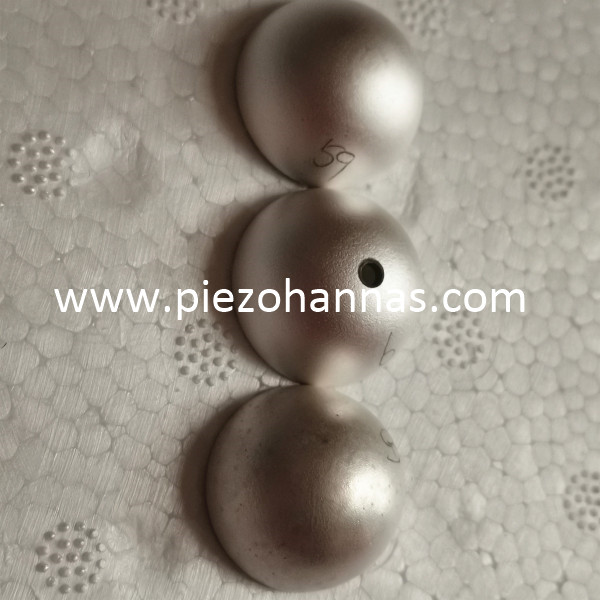Hubei Hannas Tech Co.,Ltd-Professional Piezoceramic Elements Supplier
Hot Keywords:
- All
- Product Name
- Product Keyword
- Product Model
- Product Summary
- Product Description
- Multi Field Search
Views: 0 Author: Site Editor Publish Time: 2024-05-21 Origin: Site









Precision manufacturing is a key factor in the success of various industries, and one area that has seen significant advancements is the production of piezoelectric spheres. These spheres, which possess the unique ability to convert electrical energy into mechanical energy and vice versa, have revolutionized a wide range of applications, from medical devices to automotive systems. In this article, we delve into the intricacies of piezoelectric spheres, exploring their composition, functionality, and the secrets behind their high performance in precision manufacturing. By understanding the science and technology behind these spheres, businesses can unlock new possibilities for innovation and efficiency in their manufacturing processes.
Piezoelectric spheres are fascinating objects that play a crucial role in various industries and applications. Understanding their principles and applications is essential for anyone working in the field of electronics, engineering, or materials science.
Piezoelectric spheres are spherical objects made from materials with piezoelectric properties. These materials have the unique ability to generate an electric charge when subjected to mechanical stress or pressure, and vice versa. This phenomenon, known as the piezoelectric effect, is the foundation of many technological advancements.
One of the key applications of piezoelectric spheres is in sensors and transducers. These spheres can convert mechanical energy, such as vibrations or pressure, into electrical signals. This makes them invaluable in the field of ultrasonics, where they are used in medical imaging, non-destructive testing, and underwater sonar systems. The ability of piezoelectric spheres to accurately detect and measure small changes in pressure or vibrations has revolutionized these industries.
Another important application of piezoelectric spheres is in energy harvesting. By utilizing the piezoelectric effect, these spheres can convert ambient vibrations or mechanical movements into electrical energy. This technology has the potential to power small electronic devices, such as sensors or wearable gadgets, without the need for external power sources. It opens up possibilities for self-sustainable and environmentally friendly energy solutions.
Piezoelectric spheres also find applications in precision positioning systems. Their ability to convert electrical signals into mechanical movements enables precise control and manipulation of objects. This is particularly useful in fields such as microscopy, robotics, and aerospace, where accurate positioning is crucial.
Precision manufacturing is a highly specialized field that requires advanced technology, meticulous attention to detail, and a commitment to quality. The secrets behind high-performance precision manufacturing lie in the use of cutting-edge techniques and the utilization of innovative materials. One such material is the piezoelectric sphere, which plays a crucial role in achieving unparalleled precision.
Piezoelectric spheres are tiny, yet powerful devices that convert electrical energy into mechanical energy. This unique property makes them ideal for high-precision applications in various industries, including aerospace, medical, and telecommunications. The key to their exceptional performance lies in their ability to accurately control and manipulate mechanical movements at a microscopic level.
In precision manufacturing, the use of piezoelectric spheres ensures that every component is produced with utmost accuracy and consistency. These spheres are employed in a wide range of applications, from micro-positioning systems to ultra-precise measurement devices. Their ability to respond rapidly to electrical signals enables precise control over movements, resulting in the production of intricate and complex components with minimal error margins.
One of the secrets to achieving high-performance precision manufacturing is the integration of piezoelectric spheres into the manufacturing process. These spheres can be embedded within machinery and equipment to provide real-time feedback, enabling adjustments to be made instantaneously. This level of responsiveness ensures that any deviations from the desired specifications are immediately corrected, reducing the risk of defects and improving overall quality.
Additionally, the use of piezoelectric spheres in precision manufacturing helps to minimize downtime and increase productivity. By incorporating these spheres into automated systems, manufacturers can enhance the speed and efficiency of their production processes. The precise control and rapid response capabilities of these spheres enable faster cycle times, leading to higher output and reduced lead times.
Moreover, the integration of piezoelectric spheres into precision manufacturing also contributes to sustainability efforts. The ability to produce components with greater accuracy and efficiency means that less material is wasted, reducing both costs and environmental impact. Furthermore, the enhanced performance of precision manufacturing systems results in products with longer lifespans, reducing the need for frequent replacements and minimizing waste.
Piezoelectric spheres have revolutionized various industries by converting mechanical energy into electrical signals and vice versa. This has led to advancements in sensing technology, energy harvesting, and precision positioning systems. The use of piezoelectric spheres in precision manufacturing enables precise control and manipulation of mechanical movements, resulting in components with unparalleled accuracy and consistency. Integrating these spheres into the manufacturing process allows for faster cycle times, improved quality, and increased sustainability. As our understanding of piezoelectric materials and their applications continues to evolve, we can expect even more innovative uses for these remarkable spheres in the future. The secrets of high-performance precision manufacturing lie in the utilization of innovative materials like the piezoelectric sphere, pushing the boundaries of what is possible in this field.
Products | About Us | News | Markets and Applications | FAQ | Contact Us